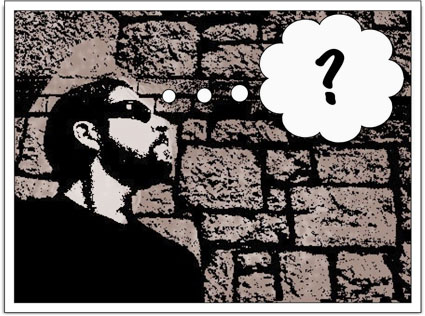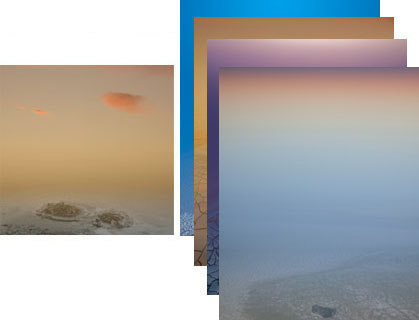Adobe Releases New Free Updates

Adobe released multiple free updates today.
Camera Raw 6.2
Lightroom 3.2
Dreamweaver CS5 11.0.3
Bridge CS5 4.0.3
Download them here.

Adobe released multiple free updates today.
Camera Raw 6.2
Lightroom 3.2
Dreamweaver CS5 11.0.3
Bridge CS5 4.0.3
Download them here.

The word amateur comes from the Latin word amator (lover). Amateurs simply do things for the love of doing them. Over time the word amateur has come to mean doing things with less education, discipline, and craft. Amateurs rarely create great works of art. Yet, we’d all be wise to reconsider the original meaning of the word amateur and do more things for the love of doing them – even if we have to learn or relearn to love the things we have to do. No great work of art was ever made without this kind of passion. Passion is a prerequisite for excellence.
One danger professionals face is losing the spark of passion and the thrill of discovery along the way to achieving proficiency. I often recommend that creative people who have developed a significant proficiency in one creative discipline become amateurs in another creative discipline. It can be extremely challenging to engage in a creative discipline you know well to be spontaneous and to give yourself license to experiment within it. But that’s exactly what you need to do to do your best work and to make break throughs.
When we experiment we tend to be less results oriented and more process oriented. When we experiment we don’t expect perfect results the first time we try something; instead we hope to find new insights that can later be perfected. When we experiment we don’t fear failure; in fact we consider it part of the process. When did we forget that learning from failures is how we make discoveries and improve? When does our fear of failure keep us from succeeding in new ways?
Working in a secondary creative discipline can give you a fresh perspective on your primary creative discipline and the creative process in general. How are the two similar? What creative strategies are most useful in both? How are the two different? Is there a way that practices in one could be applied to the other? You can find ways to hybridize the two and energize your primary creative outlet. You may even find that your enjoyment of the creative process is higher in your secondary discipline, even thought the results you achieve within it aren’t as polished. This may lead you to the most important question of all, “Why do you do what you do?”
So dare to be an amateur. Do things simply for the love of doing them. Enjoy yourself. Experiment. Become more aware of your process. Do some soul searching. Make these things you do regularly.
Learn more about the word amateur at Podictionary.
Find more inspiration in my Creativity Lessons.
Learn more in my Digital Photography Workshops.
The credits for the movie The Other Guys are brilliant.
They put recent financial crises in sharp perspective.
It’s a wonderful example of the power of images.
(Click the Go Full Screen icon to see them better.)
David McCandless shows how visualizing data makes more information by revealing patterns within it.
See more on data visualization from Hans Rosling’s lecture here.
See my favorite TED talks here.

You can learn a lot just by listening to yourself. When you speak about yourself, your creative life, and the works you produce, the words you use can be very telling. Do the words you use share common themes?
When I review someone’s work I listen carefully to the words they use to describe themselves and their work. One person was particularly concerned with mortality, his family’s and his own, and he kept using words that had to do with time, often in a limiting way. These concerns were reflected in the images he was making but he wasn’t consciously aware that any of this was taking place. Often it’s best if these kinds of observations are simply stated, without any evaluation or judgement attached. With nothing more than one important observation, he gained new insight into and control of his life and his life’s work. Becoming more aware of how pervading his concerns were allowed him to consider his choices more clearly – actions, reactions, emotional responses, self-image, and the images he made. He felt energized.
I’ve had many similar encounters.
I know that I can learn a lot about myself, simply by listening to how I speak.
Find more inspiration in my Creativity Lessons.
Learn more in my Digital Photography Workshops.

To truly touch your viewers you may have to touch someone or something else first.
We have many intelligences (intellectual, emotional, physical, etc), but when it comes to making images we often leave many of them out of the mix. Try energizing your creative process by using all of you.
Get physical. The power of touch can reveal volumes. Imagine how much and how quickly an extended hand or a pat on the back can say. This doesn’t only apply to interacting with people and animals. If you physically make contact with any subject, even inanimate objects, you’ll come to understand it better; its scale, texture, density and much more. You may even decide to make contact with more than your hands. Press your face up against a window. Step into the currents of swift-flowing waters. Lay down in shifting sands. Experience your subjects from many perspectives. Doing this will lead to many new ideas. It will also inform old ideas. As your understanding of your subjects grows, your images will take on new dimensions and new depths.
Find more resources on Creativity here.
Learn more in my digital photography workshops.

There’s a lot to learn about producing books and graphic design.
Find books that will quickly help you learn about these interesting topics here.
Find more Bookmaking resources here.
Learn more in my Fine Art Digital Printing workshops.

How many images is optimum for a photo book? Of course, the answer depends on the kind of book being produced and its purpose. There’s no set number; extreme lengths for books vary between as few as 12 to more than 300 images.
There are number of things to keep in mind when making a photo book.
Most photo books contain between 50 and 100 images.
Shorter books can work well if the images they contain are very concentrated, being both graphically strong and thematically related. Short books can leave and audience feeling hungry for more, which is a good thing – but if they don’t create strong presence rapidly they’ll lack both impact and staying power.
Longer books work well if a subject is complex and/or portrays a substantial duration of time. Long books may tire an audience and if not carefully edited and sequenced can seem unfocussed and rambling.
Be careful. It’s tempting to show all of your work. Instead, show only your best work. Avoid including weaker images to make a book seem larger and more important; they just dilute the average quality. And, include only images that relate to one another. Avoid including more images simply because they’re graphically strong; instead, select images that are related to each other. The form of a book will imply and create relationships between the separate items included in it. Make sure a viewer’s attempts to find and understand those relationships don’t go unrewarded. The more interesting and rewarding you can make this search, the stronger your book will be.
One way to find out if a book is too short or too long is to create a prototype and then observe how people interact with it. Do they put a short book down quickly without giving it a second or third look? Do they suddenly increase their viewing speed in a long book or not finish at all? After someone looks at a book, ask them if the book seems too short or too long.
Find more Bookmaking resources here.
Learn more in my Fine Art Digital Printing workshops.
“Clay Shirky looks at ‘cognitive surplus’ — the shared, online work we do with our spare brain cycles. While we’re busy editing Wikipedia, posting to Ushahidi (and yes, making LOLcats), we’re building a better, more cooperative world.”
He points out, “The gap is between doing anything and doing nothing.”
What will you do today, this week, this month, this year, next year?

Visit Nik Radio and listen to advice and inspiration from top pros using Nik software; the growing list of offerings includes Tony Corbel, Moose Peterson, Rick Sammon, Tony Sweet, Vincent Versace, and many others.
Want more inspiration?
Read selections from 42 conversations with photographers here.